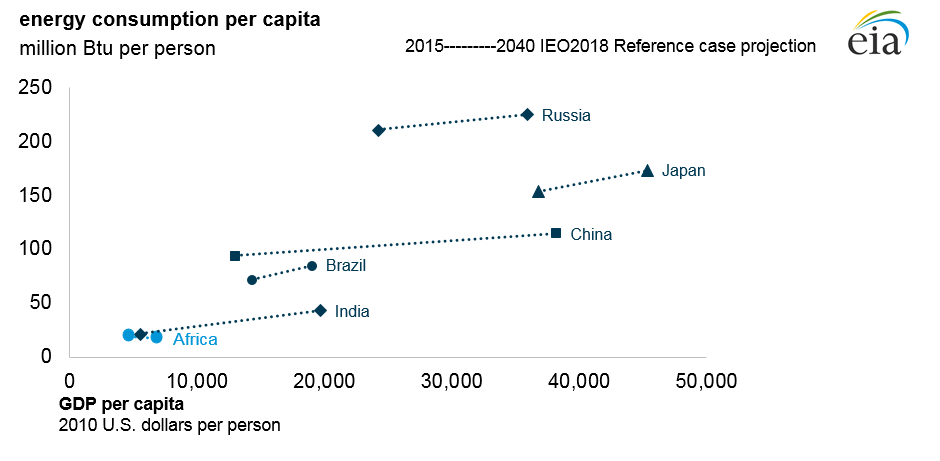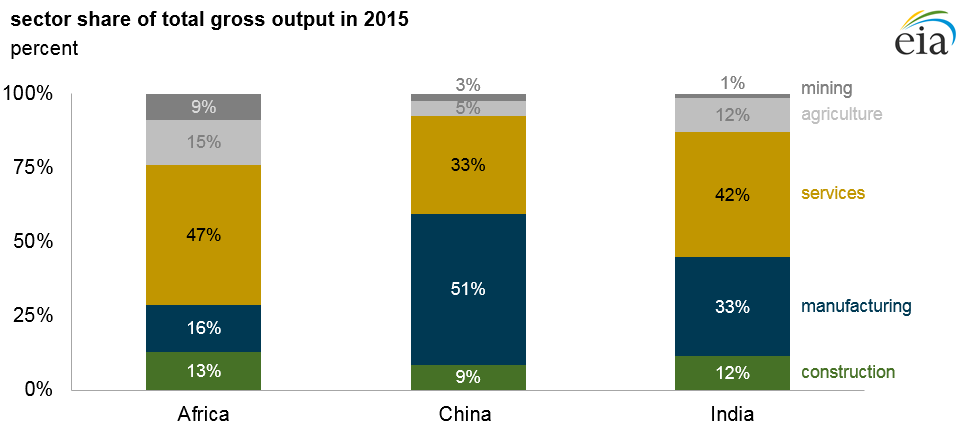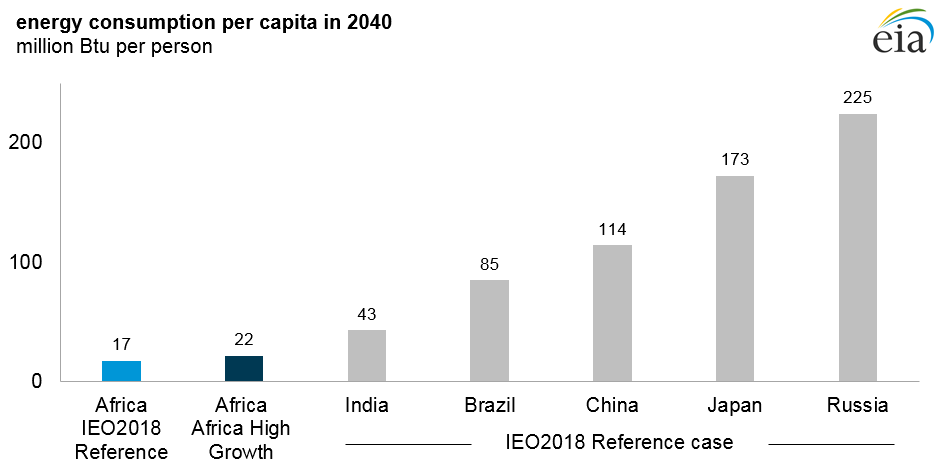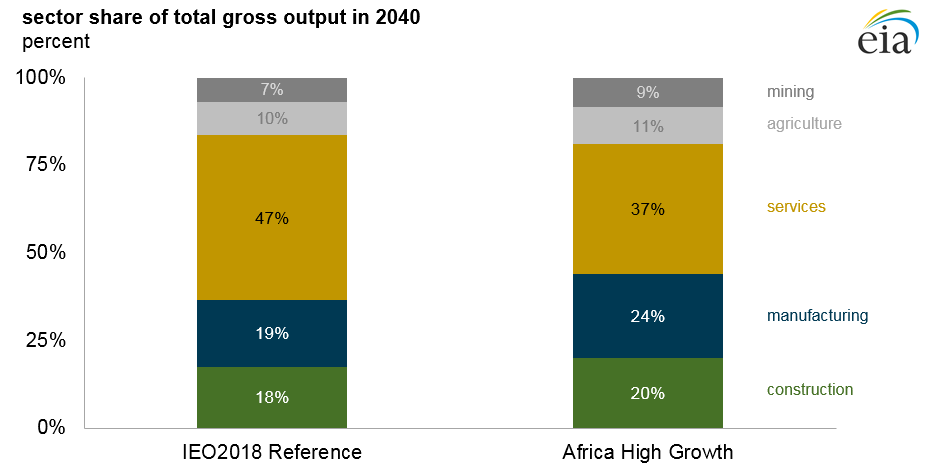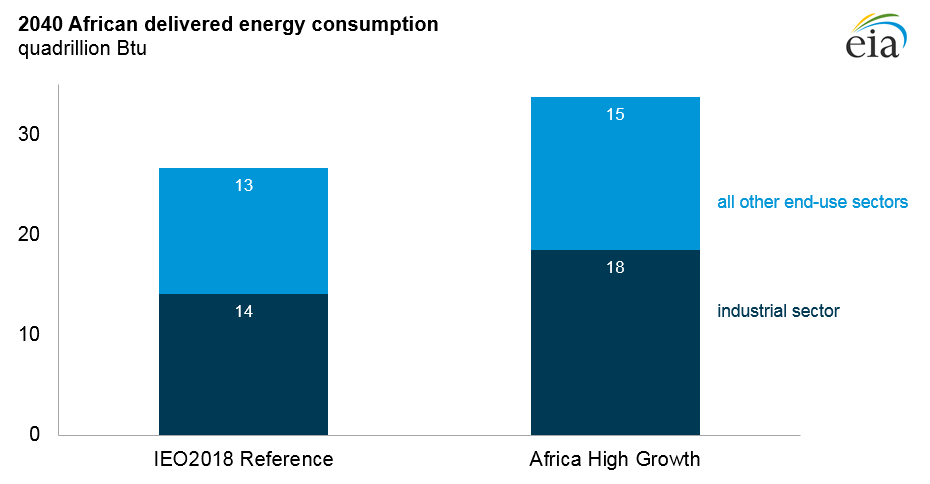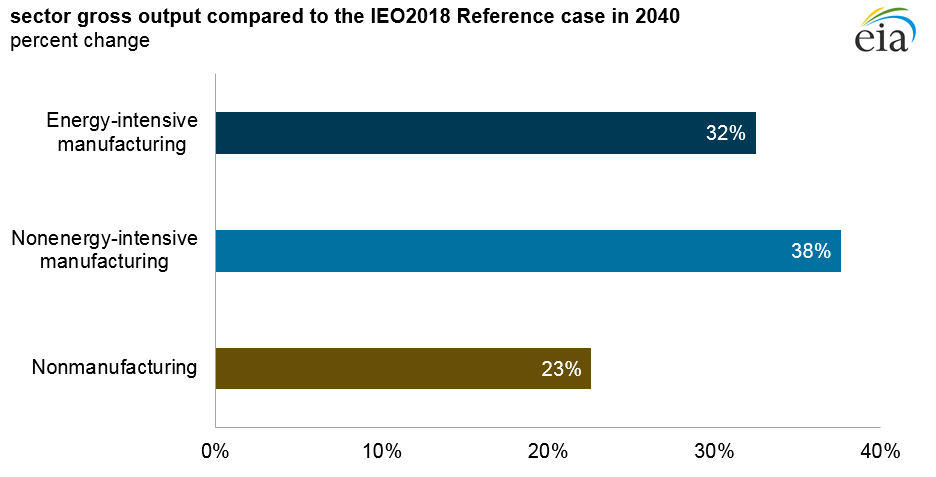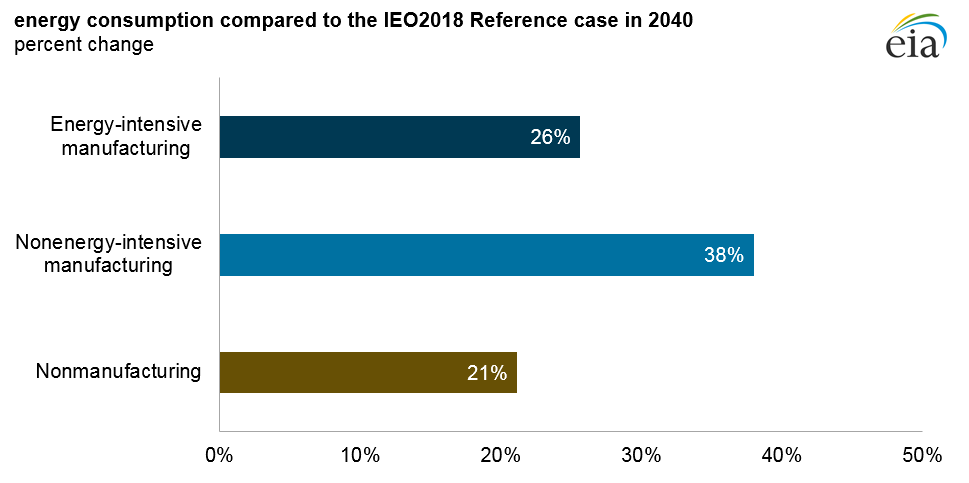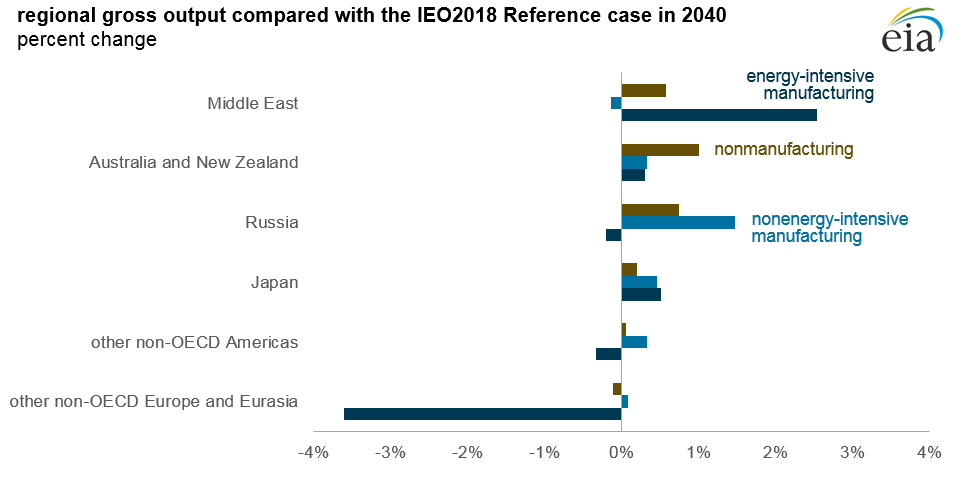Energy implications of higher economic growth in Africa
Key takeaways
- Higher economic growth in Africa leads to an expansion of the manufacturing sector and an increase in industrial energy use because of possible regional competitive advantages.
- Higher assumed economic growth over the projection period leads to African energy consumption per capita that is about 30% higher than in the IEO2018 Reference case in 2040.
- The IEO2018 Africa side case highlights the need to further explore the relationship between projected changes in GDP and the response of energy consumption, particularly in the industrial end-use sector.
Africa’s energy consumption per capita lags behind other regions in the IEO2018 Reference case as population growth outpaces energy use
- The growing gap in GDP per capita between Africa and other regions highlights the potential for faster African economic growth.
- Further infrastructure development, particularly transportation network development and electrification, could alter this projection.
In 2015, Africa's manufacturing sector was relatively small, and its services sector was relatively large, which contributed to Africa's comparatively low energy use
- Africa’s manufacturing sector share of total output was one-half the share in India and only one-third of China’s share in 2015.
- Africa’s construction, services, and agriculture output shares were similar to those shares in rapidly growing India in 2015.
- Africa’s mining output share was larger than that of both China and India in 2015 because of abundant natural resources and the underdeveloped state of many African economies.
In the IEO2018 Africa High Growth case, energy use per capita in 2040 rises 30% compared with the IEO2018 Reference case yet remains lower than in other major economies
- EIA simulated an economic growth case where Africa’s economy grows 5.0% per year on average through 2040 instead of the IEO2018 Reference case average of 3.8%.
- In the Africa High Growth case, higher GDP growth is primarily driven by higher private investment and personal consumption.
- Higher economic growth in Africa increases projected energy consumption per capita by 2040; however, it decreases in the IEO2018 Reference case.
- Even with additional growth in energy use, African energy consumption never reaches the level of other major economies in 2040.
High economic growth in Africa leads to an increased role for the manufacturing sector compared with the IEO2018 Reference case and a reduced role for the services sector by 2040
- Higher economic growth in Africa results in an increase in the size of the manufacturing sector relative to the services sector.
- The manufacturing share of output increases the most because Africa’s economy more effectively employs its population, urbanization, and natural resources to broaden its industrial base.
Africa's industrial energy use increases more rapidly in the IEO2018 Africa High Growth case compared with all other end-use sectors
- Energy use in the Africa High Growth case is 22% higher than the IEO2018 Reference case in 2040.
- The industrial sector accounts for more than half of the increase in energy use from 2015 to 2040 in both the IEO2018 Reference case and in the Africa High Growth case.
- Increased living standards as a result of higher economic growth increase energy use in other sectors.
Manufacturing output growth increases more than nonmanufacturing by 2040 when compared with the IEO2018 Reference case energy-intensive and nonenergy-intensive manufacturing growth increases are both above 30%
- African economies account for a larger manufacturing share in 2040, with percentage increases in output for both energy-intensive and nonenergy-intensive manufacturing industries that exceed 30% compared to the IEO2018 Reference case.
- Nonmanufacturing industrial output grows more slowly, rising by 23% compared to the IEO2018 Reference case in 2040.
Manufacturing drives the largest energy changes by 2040 compared with the IEO2018 Reference case and the nonmanufacturing sector consumes about 21% more energy than in the IEO2018 Reference case
- Manufacturing drives the largest energy changes by 2040 in the Africa High Growth case.
- Energy use for nonenergy-intensive manufacturing increases the most as a percentage.
African industrial output growth is associated with higher energy-intensive manufacturing in the Middle East and a reduction of energy-intensive manufacturing output in non-OECD Europe and Eurasia
- African countries have a competitive advantage in manufacturing because of low-cost labor and natural resource availability, which can displace output in other regions of the world.
- Higher African economic growth decreases manufacturing output in competing regions such as other non-OECD Europe and Eurasia.
- Industrial economic activity in the Middle East in 2040 increases relative to the IEO2018 Reference case as higher African growth increases demand for fossil fuels.

